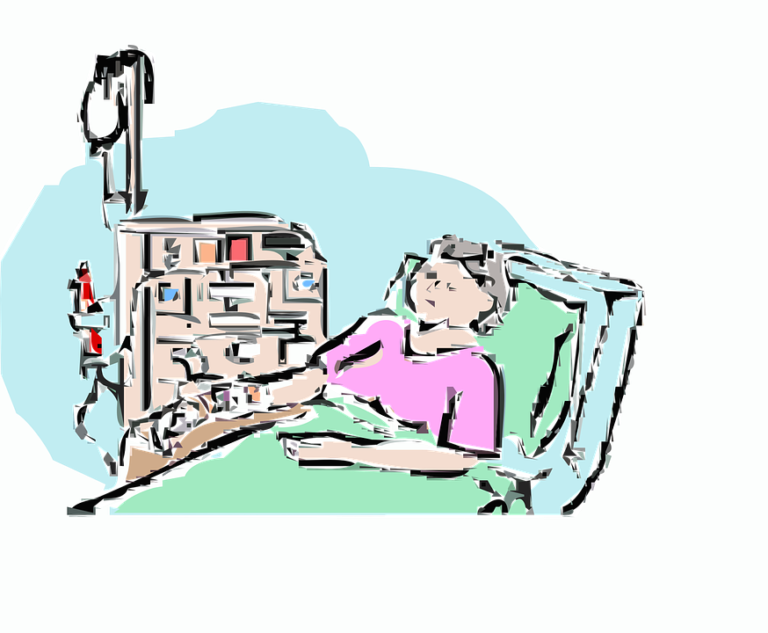Book Appointment Now

Telehealth for Cardiac Patients: Change Model
Telehealth for Cardiac Patients: Change Model focuses on leveraging telehealth technology to improve outcomes for patients with congestive heart failure (CHF). CHF is a chronic condition associated with high readmission rates and significant healthcare costs, with nearly 25% of patients rehospitalized within 30 days of discharge (American Heart Association [AHA], 2021). Implementing telehealth protocols allows for remote monitoring, timely interventions, and improved patient engagement, addressing critical gaps in traditional care models. This paper examines telehealth for CHF patients through the lens of a change model, exploring its potential to reduce readmissions, enhance self-management, and transform cardiac care delivery.
Get a custom paper help about telehealth for congestive heart failure (CHF) patients
Order Custom Nursing Paper
Theoretical Framework of Reference
The success of telehealth programs for CHF patients is supported by change models that guide the adoption of new practices. One such model is Kotter’s 8-Step Change Model, which provides a structured framework for implementing organizational change (Kotter, 1996).
- Establish a Sense of Urgency: Highlight the burden of CHF-related readmissions and the potential of telehealth to improve outcomes.
- Form a Powerful Coalition: Assemble a multidisciplinary team, including cardiologists, nurses, and IT specialists, to lead the telehealth initiative.
- Create a Vision for Change: Develop a clear vision emphasizing the integration of telehealth to enhance CHF management and reduce readmissions.
- Communicate the Vision: Use staff training sessions, meetings, and educational materials to promote the program’s benefits.
- Remove Obstacles: Address barriers such as staff resistance, technology access, and patient concerns about telehealth usability.
- Generate Short-Term Wins: Measure early successes, such as reduced readmissions or improved patient satisfaction, to build momentum.
- Build on the Change: Expand telehealth services to include additional features like medication reminders and lifestyle coaching.
- Anchor the Changes in Culture: Establish telehealth as a standard component of CHF care by embedding it into organizational policies and workflows.
This model ensures a systematic approach to integrating telehealth protocols and aligning them with organizational goals.
Dimensions of Telehealth for CHF Patients
Telehealth addresses multiple dimensions of care for CHF patients, including physical health, emotional well-being, and social factors.
Physical Dimension: Telehealth enhances the management of CHF by providing tools for real-time monitoring of vital signs, such as blood pressure, heart rate, and weight. Early detection of worsening symptoms allows for timely interventions, preventing hospital readmissions. Evidence shows that telehealth programs can reduce CHF-related readmissions by up to 30% (Sharma et al., 2020).
Emotional Dimension: Living with CHF can be emotionally overwhelming for patients, leading to anxiety and depression. Telehealth provides a sense of security through regular virtual check-ins with healthcare providers, offering reassurance and emotional support.
Social Dimension: Telehealth bridges gaps in care for patients in rural or underserved areas, providing access to specialists and resources that might otherwise be unavailable. It also fosters caregiver involvement by enabling family members to participate in virtual consultations and care planning.
Evidence-Based Telehealth Interventions for CHF Patients
Telehealth interventions for CHF patients focus on remote monitoring, patient education, and communication strategies to enhance outcomes.
Remote Monitoring: Telehealth platforms equipped with wearable devices and connected health technologies allow for continuous monitoring of vital signs. For example, patients can use Bluetooth-enabled scales to track weight changes, a key indicator of fluid retention in CHF. Providers receive alerts for abnormal readings, enabling prompt adjustments to treatment plans (Kitsiou et al., 2021).
Patient Education: Telehealth programs include educational modules to help patients understand CHF, recognize early symptoms, and adopt self-management strategies. For instance, patients can access videos and interactive tools explaining the importance of medication adherence, low-sodium diets, and physical activity.
Two-Way Communication: Secure messaging and virtual consultations enable real-time communication between patients and providers. These interactions address patients’ concerns, reinforce treatment plans, and provide ongoing support.
Medication Management: Telehealth platforms with medication reminder features reduce missed doses and improve adherence. Pharmacists can also conduct virtual medication reviews to address potential drug interactions or side effects.
Challenges in Implementing Telehealth for CHF Patients
Despite its benefits, implementing telehealth for CHF patients presents several challenges.
Technology Barriers: Limited access to smartphones, internet connectivity, or user-friendly devices can hinder the adoption of telehealth among older adults or low-income patients. Providing training and support is essential to overcoming these barriers.
Patient Engagement: Some patients may be reluctant to adopt telehealth due to concerns about privacy, usability, or trust in remote care. Addressing these concerns through clear communication and patient-centered approaches is critical.
Resource Constraints: Smaller healthcare organizations may lack the infrastructure or funding to implement telehealth programs. Partnerships with technology providers or grant funding can help address these limitations.
Data Integration: Integrating telehealth data into electronic health records (EHRs) is necessary for seamless care coordination but may require significant investment in IT systems and staff training.
Conclusion
Telehealth for Cardiac Patients: Change Model emphasizes the transformative potential of telehealth in managing CHF and reducing readmissions. By leveraging Kotter’s 8-Step Change Model, healthcare organizations can systematically implement telehealth protocols, addressing both clinical and organizational challenges. Telehealth enhances CHF management through remote monitoring, patient education, and real-time communication, improving physical health, emotional well-being, and access to care. While barriers such as technology access and patient engagement persist, targeted strategies can ensure successful adoption and integration. As telehealth continues to evolve, its role in cardiac care will remain vital for improving patient outcomes and reducing the burden of CHF.
Also read:
- NUR 590 Evidence-Based Practice Proposal – Section D Change Model
- NUR 699 Week 5 Evidence-Based Practice Proposal – Section E: Change Model
- Evidence-Based Practice Change Process
References
- American Heart Association (AHA). (2021). Heart failure and hospital readmissions. Retrieved from www.heart.org
- Kotter, J. P. (1996). Leading change. Harvard Business Review Press.
- Kitsiou, S., et al. (2021). Remote monitoring interventions for patients with heart failure: A meta-analysis. Journal of the American Medical Informatics Association, 28(4), 638-645.
- Sharma, A., et al. (2020). Telehealth in the management of chronic heart failure: A systematic review and meta-analysis. Journal of Cardiac Failure, 26(2), 181-191.







